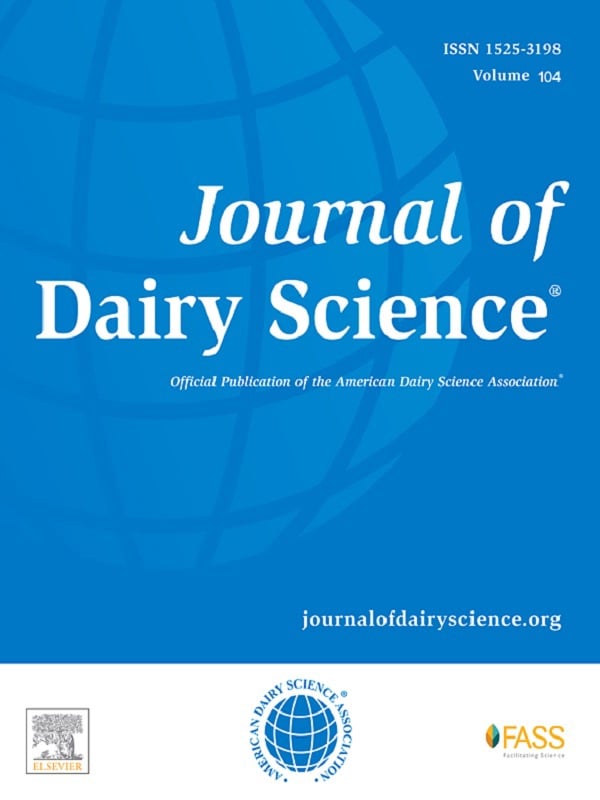Fatty acid profile characterization in colostrum, transition milk, and mature milk of primi- and multiparous cows during the first week of lactation
J. N. Wilms,1,2 K. S. Hare,1 A. J. Fischer-Tlustos,1 P. Vahmani,3 M. E. R. Dugan,4 L. N. Leal,2 and M. A. Steele1*
1 Department of Animal Biosciences, University of Guelph, Guelph, ON N1G 2W1, Canada
2Trouw Nutrition R&D, 3800 AG Amersfoort, the Netherlands
3 Department of Animal Science, University of California, Davis 95616
4 Agriculture and Agri-Food Canada, Lacombe Research and Development Centre, Lacombe, AB T4L 1V7, Canada
- Ruminants
- Dairy
- Open Access
- 2022
J. Dairy Sci. 105 https://doi.org/10.3168/jds.2021-20880
A. J. Fischer-Tlustos, P. Vahmani, M.E.R. Dugan, L. N. Leal, M.A. Steele

ABSTRACT
The specific fatty acid (FA) profile of colostrum may indicate a biological requirement for neonatal calves. The objective of this study was to characterize the FA profile and yields in colostrum, transition milk, and mature milk in primiparous (PP) and multiparous (MP) cows. Colostrum was milked from 10 PP and 10 MP Holstein cows fed the same pre- and postpartum rations. Milkings (M) 2 to 5 and 12 were respectively termed transition and mature milk. Overall, short-chain FA (C4:0 and C6:0) were 61 and 50% lower in colostrum than mature milk, respectively. A parity by milking interaction was also present, with higher C4:0 for PP cows at M2 and for MP cows at M12. Additionally, higher concentrations of C6:0 were present for PP cows at M2 through M4 and for MP cows at M12. Palmitic (C16:0) and myristic (C14:0) acids were 16% and 27% higher in colostrum than mature milk, respectively. However, total saturated FA remained relatively stable. Branched-chain FA were 13% lower in colostrum than mature milk and higher in PP than MP cows throughout the milking period. The proportion of trans-monounsaturated FA (MUFA) was 42% higher in PP cows throughout the milking period, as well as 15% lower in colostrum than mature milk. In contrast, cis-MUFA and total MUFA were not affected by milking nor parity. Linoleic acid (LA) was 13% higher in colostrum than transition and mature milks, but α-linolenic acid (ALA) did not differ. Consequently, the ratio of LA to ALA was 23% higher in colostrum than mature milk and 25% higher in MP cows. Linoleic acid was also 13% higher in MP cows, whereas ALA was 15% higher in PP cows. Conjugated linoleic acid (CLA, cis-9,trans-11) was 63% higher in PP cows, and no differences between colostrum and mature milk were detected. Overall, polyunsaturated FA (PUFA) from the n-6 and n-3 series were over 25% higher in colostrum compared with transition and mature milk. Milking by parity interactions were present for arachidonic acid (ARA), eicosapentaenoic acid (EPA), docosapentaenoic acid (DPA), docosahexaenoic acid (DHA), and total n-3 PUFA, translating to higher proportions in PP cows in M1 to M3, whereas proportions remained relatively stable throughout the milking period in MP cows. Despite increasing milk yields throughout the subsequent milkings, higher yields of EPA, ARA, DPA, and DHA were present in colostrum than in mature milk. Greater proportions and yields of n-3 and n-6 FA in colostrum may translate to specific requirements for newborn calves. Differences were also observed between PP and MP cows and may reflect different nutrient requirements and partitioning.